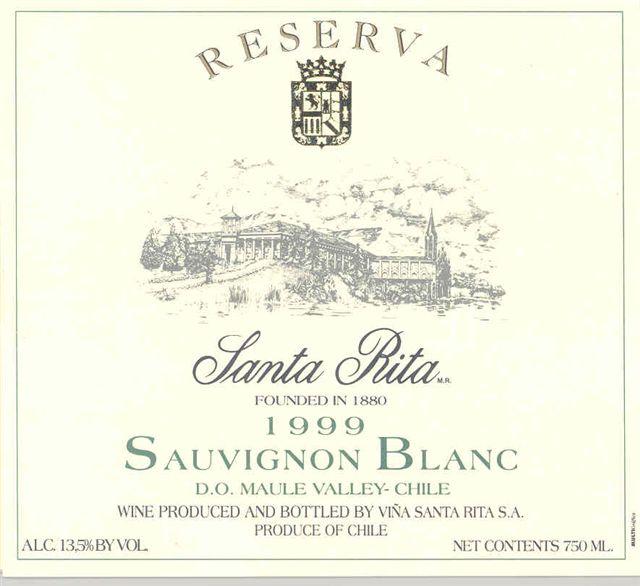1999 Maule Valley Sauvignon Blanc
The Santa Rita Reserva Sauvignon Blanc from the esteemed Maule Valley embodies a delightful expression of this iconic varietal. With a pale straw color that glimmers in the glass, this wine offers an inviting aroma of citrus fruits, complemented by hints of green apple and freshly cut grass. On the palate, it showcases a refreshing acidity that dances gracefully, contributing to an overall lively and mouthwatering experience. The fruit intensity is pronounced, making each sip enjoyable and invigorating. This Sauvignon Blanc is not overly dry, offering a perfect balance that enhances its food-friendly appeal, ideal for pairing with seafood or light salads. With its vibrant character, the 1999 Santa Rita Reserva is a testament to the exceptional quality of its region and a delightful choice for both seasoned wine enthusiasts and those new to the world of white wines.
The Santa Rita Reserva Sauvignon Blanc from the esteemed Maule Valley embodies a delightful expression of this iconic varietal. With a pale straw color that glimmers in the glass, this wine offers an inviting aroma of citrus fruits, complemented by hints of green apple and freshly cut grass. On the palate, it showcases a refreshing acidity that dances gracefully, contributing to an overall lively and mouthwatering experience. The fruit intensity is pronounced, making each sip enjoyable and invigorating. This Sauvignon Blanc is not overly dry, offering a perfect balance that enhances its food-friendly appeal, ideal for pairing with seafood or light salads. With its vibrant character, the 1999 Santa Rita Reserva is a testament to the exceptional quality of its region and a delightful choice for both seasoned wine enthusiasts and those new to the world of white wines.




